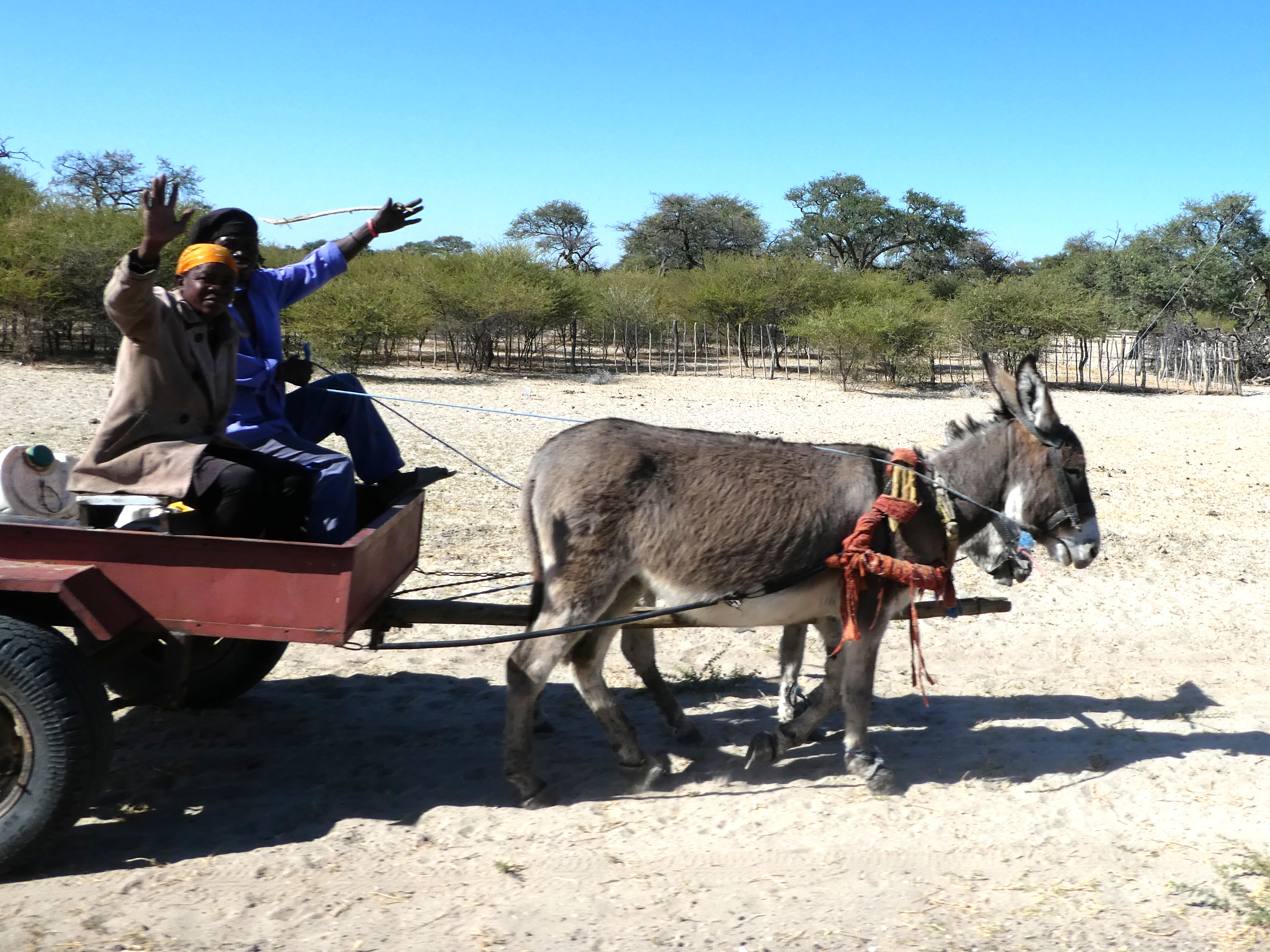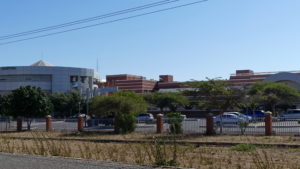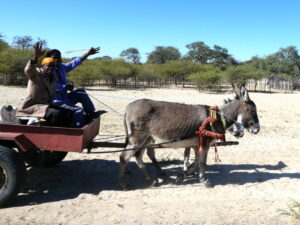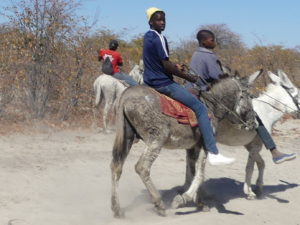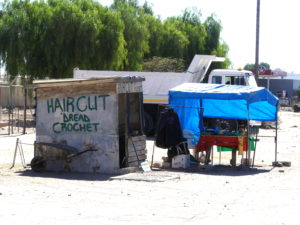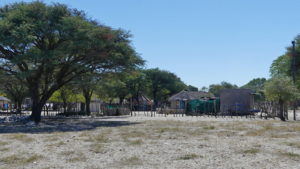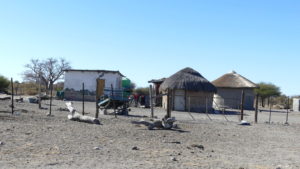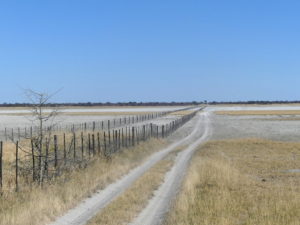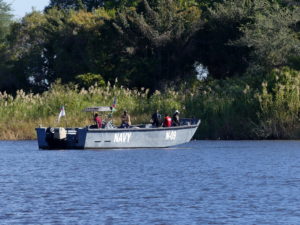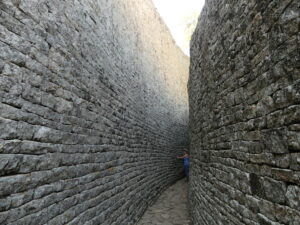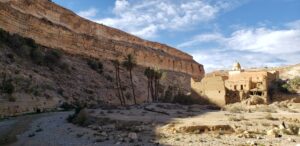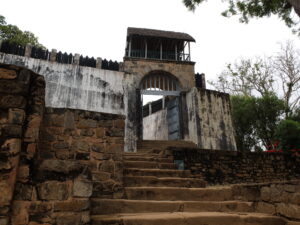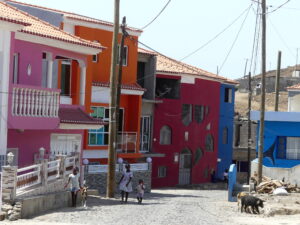In brief: We spent enough time across Botswana that we learned quite a bit about the culture and the lifestyle.
Botswana has mainly been a model of good government in Africa. It has not been immune to problems typical of developing countries like corruption, land rights and seizures, as well as treatment of the indigenous population.
But the leaders have taken the gains from a natural resource – in its case, diamond mining – and banked it for the health and welfare of its people. Even a moderate-sized town could deliver care in a sprawling regional hospital complex. Health care delivery is now a given in Botswana, free to all its citizens. During our visit, we met several socially-minded people who aim to be politicians in order to improve things rather than profit from the system.
It is a country of great contrasts – a few cities and many small towns; dry deserts and the (normally) water-soaked and wildlife-rich Okavango or Chobe River wetlands; sleek white Toyota 4x4s jostling with donkey carts; small ranchers and large corporate agricultural holdings.
Donkeys roam freely even by the highways, when not pulling carts. The cart is often called the Kalahari Ferrari, a turn of phrase we felt was perhaps a bit condescending. It’s really more a slow-moving 2-donkey-power pickup truck.
Across the country, moreover, we found great attractions for tourists in the well-known places like Okavango and Kalahari and the lesser known like Khama Rhino and Kgalakgadi.
And its people, both Tswana in origin or European, were unfailingly gracious, friendly, inquisitive and joyful. As in most of southern Africa, each speaks at least three or four languages.
You do greet – and are greeted by – strangers on the street. You do start any encounter, whether business or social, with a round of good-days and how-are-yous. “Quick” yields to “sociable” any time. We were just passing by these young men, with donkeys and no cart. It seems they would have preferred us to stop and talk a while.
We appreciated it all.
So…we were sure there was nothing to fear here if we needed a haircut – despite the sign in this village. With all the languages spoken here, spelling mishaps are inevitable.
The norm for shopping is the small local shop or pop-up stands like this, run by the entrepreneurial. You often find such stalls outside bigger markets or malls, hawking various food goods or other items where people gather. However, even small towns seem to have shopping malls of various sizes and good-sized supermarkets, some quite new and sleek.
A typical small “family” village in the backcountry, the “bush,” of Botswana consists of a set of houses of brick and plaster walls with thatch roofing, usually sectored off with fencing.
Farther off in the bush, ranch lands sprawl over the adjoining desert, as you need a lot of space to provide fodder for the animals. But the working part here is small and functional.
Boreholes supply the water for this ranch (and much of the rest of Botswana), where the cattle and donkeys had collected to the left of these structures. The round mud-walled buildings are thatch-covered, a low cost and climate-controlled method to construct a roof. Botswana’s government is encouraging large agricultural businesses from South Africa to grow crops like potatoes and onions in the bush, using borehole water for irrigation, but most ranching here is small scale.
By the mid-1950s, ranching for meat had become a big business in Botswana, but it was threatened by outbreaks of hoof and mouth disease in the wild African buffalo herds. So the pre-independence government built this fencing across the breadth of Botswana to prevent the buffalo herds from migrating into ranching land. That action, as lamented in the book Cry of the Kalahari, devastated the free-roaming herds of all kinds of animals. Bodies piled up along the fence as the animals died of thirst. To amend the situation, so tourists would come, the government set aside huge wildlife reserves on both sides of the fence, but wild Botswana was never the same. When we drove through Veterinary Control gates in the fence, we had to dip our shoe bottoms in a saline solution and run the tires of the car through it. Transporting fresh meat across the borderlines was forbidden.
So, in a landlocked country, why do you need a navy? This vessel on the Chobe River is part of an extensive deployment of soldiers who fight against poaching in the country – to preserve an area still rich with wild animals. Wildlife and nature increasingly mean big business for Botswana, with tourists bringing in huge revenue and employment options for its people.
(Also, for more pictures from Botswana, CLICK HERE to view the slideshow at the end of the itinerary page.)


